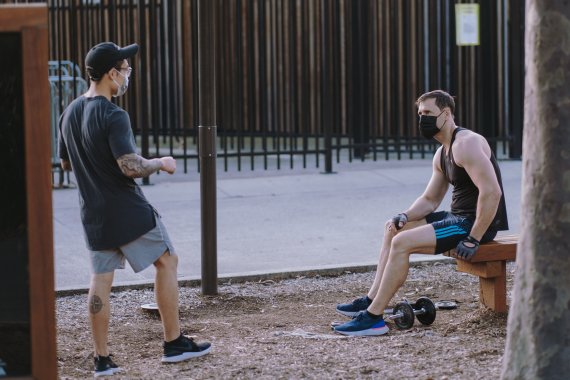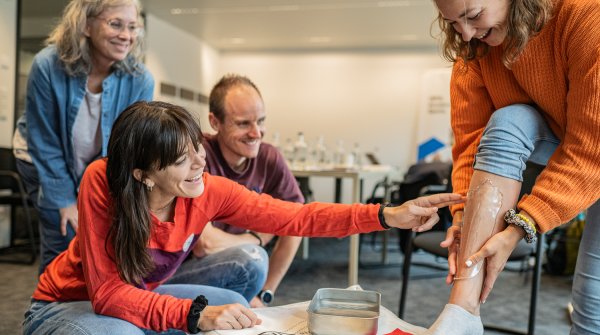
After a long closure the gyms open again. In Germany, masks are compulsory for the staff but not for the customers.
Those who want to protect themselves and others even more effectively against infection may of course still train with a mask or mouth guard. Especially during sports, aerosols are emitted which can spread the Covid-19 virus.
However, there are some aspects to be considered when doing sports with a mask or mouthguard. ISPO.com answers the most important questions about working out with a mask.
In general, a suitably thin mouthguard for a training adapted to one's own abilities does not represent an additional health risk.
However, the thicker the fabric of a mask or mouthguard, the more difficult it can become to breathe. This can be a risk factor, especially during sports with increased oxygen requirements: If the body does not receive enough fresh oxygen, this affects the oxygen saturation in the blood and can cause weakness, dizziness or general discomfort.
The dilemma: Especially people with lung diseases like asthmatics should be careful with masks and mouthguards during training. At the same time, they expose themselves without mouth protection to the risk of a more serious course of disease in the event of infection with Covid-19. People with respiratory or circulatory problems should therefore reduce their training with a mask or train at home without a mouth guard.
The lighter and thinner the fabric, the more suitable is the mask or mouthguard for sports. Fabric masks or surgical masks are therefore well suited. FFP masks with a breathing valve protect the wearer more effectively against infection. In fact they hinder breathing enormously and can be a health hazard, especially if the workout is not adjusted accordingly.
In the meantime, sports equipment companies also have masks in their product range. For example, the outdoor brand Maloja with its Reusable Mask with ViralOff technology. La Sportiva also offers the Stratos Mask, a model with bacteria filters.
When training with a mask, the lungs are more stressed than without a mask because of the difficult oxygen supply. However, this does not necessarily have to be a disadvantage in training. On the contrary: The increased activity of the respiratory muscles can even have an endurance-enhancing effect.
Nevertheless, caution is required: Intensive training intervals, such as HIIT training, increase the risk of hypoxemia - i.e. a lack of oxygen. The pulse should therefore always be monitored during short intervals of exercise: It should not be higher than 220 minus age. For continuous exertion such as on the treadmill, the rule of thumb is 190 minus age.
If you train with a mask for the first time, you should start training slowly and gradually approach your limits.
A mouthguard is nevertheless not a panacea against the corona virus. The basic rules of social distancing, regular hand washing and avoiding touching the face are still essential.
However, the following instructions should be followed when wearing a mask and mouthguard during sports:
- The mask should fit tightly to the face and not slip.
- The material of the mouthguard should be able to dry well and be sufficiently permeable to air.
- Bring along a change of masks! As soon as a mask is soaked through, it must be replaced with a dry one. Do not put the moist mouthguard on exercise equipment!
- Only cleaned and disinfected masks should be worn.
 Know-HowThe 11 Best TRX Exercises
Know-HowThe 11 Best TRX Exercises
- ISPO awards
- Mountain sports
- Bike
- Design
- Retail
- Fitness
- Health
- ISPO Job Market
- ISPO Munich
- ISPO Shanghai
- Running
- Brands
- Sustainability
- Olympia
- OutDoor
- Promotion
- Sports Business
- ISPO Textrends
- Triathlon
- Water sports
- Winter sports
- eSports
- SportsTech
- OutDoor by ISPO
- Heroes
- Transformation
- Sport Fashion
- Urban Culture
- Challenges of a CEO
- Trade fairs
- Sports
- Find the Balance
- Product reviews
- Newsletter Exclusive Area
- Magazine




